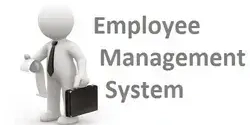How to Boost ROI From LinkedIn Prospecting
LinkedIn is the biggest professional social media network, boasting an impressive 1 billion users, including 65 million decision-makers. So, it’s pretty clear that it’s a fantastic platform for prospecting. Connecting with potential clients and expanding your network seems like a straightforward idea, right? However, as you dig a little deeper, you'll see that just using LinkedIn's basic search features might not bring you the results you're looking for. You need to try out various methods to boost your efforts. In this post, I’m excited to share some of the lesser-known ways to boost your ROI from LinkedIn prospecting. These tips might just help you find new opportunities when standard strategies don't seem to work. Let's get started. 1. Target LinkedIn Event Attendees: Connect Through Shared Interests People who go to LinkedIn events might not all be connected, but what they do have in common could make your sales pitch hit home. When you target prospects at LinkedIn events, you're focusing on individuals who are already interested in a particular topic or industry challenge. This approach doesn't just allow you to reach out to several potential clients in one place — it offers invaluable insights into their current needs, priorities, and pain points. By reviewing the event description, speaker topics, and attendee comments, you can craft personalized outreach that speaks directly to what brought them there in the first place. Try this approach: Research upcoming events in your industry Register for relevant events and review the attendee list Take notes on discussion topics and questions raised Connect with attendees after the event with personalized messages referencing specific event takeaways Position your solution as a natural extension of what they just learned Keep in mind that timing is everything. Reach out while the event is still fresh in their minds to maximize your conversion rate. 2. Leverage LinkedIn Groups for Targeted Prospecting Yes, I know what you're thinking. Most LinkedIn groups appear dormant, with minimal posting activity. However, their members are still there, even if they're not highly active, simply catching up around a shared interest or industry. For the groups that do show signs of life, invest time in genuine engagement. Ask thoughtful questions, offer actionable advice, share relevant experiences, and actively participate in discussions. Beyond identifying high-quality prospects, you'll gain valuable insights into your buyer persona's challenges and needs directly from them. Here's the power move many overlook: You can send a direct message to every person in a group on LinkedIn, even if you’re not yet connected to them. This bypasses one of the platform's biggest prospecting barriers. To find and target group members efficiently, use the Sales Navigator filters: Click on “Lead filters” from the homepage Proceed to the "Groups" filter Enter a keyword or the actual name of a LinkedIn group Select from LinkedIn's suggestions of similar groups Try using more filters to further refine your search With this method, you can increase your chances of connecting with relevant decision-makers while engaging in meaningful conversations with prospects based on shared interests. 3. Maximize Impact with Free and Paid InMails A LinkedIn InMail is a direct private message to or from a LinkedIn member outside your network. This feature allows you to send messages to people you can’t normally message without a prior connection. While LinkedIn Premium plans offer a monthly allotment of InMail credits, many users don’t take full advantage of them. In my experience, InMails are most effective when deployed as the final step in a multi-touch sequence, particularly when LinkedIn connection requests and email outreach haven't yielded results. To boost ROI from LinkedIn prospecting using InMails: Save your InMail credits for high-value prospects that haven't responded through other channels Craft shorter, more direct messages Include a clear, specific call-to-action Reference something unique from their profile or recent activity Follow up with value-adding content if you don't receive a response The exclusivity of InMails often leads to higher open rates, but use them strategically rather than as your first point of communication with a LinkedIn contact. 4. Use the "People Also Viewed" Feature LinkedIn's "People Also Viewed" feature shows profiles that the platform's algorithm has determined might be relevant to your interests based on your browsing patterns. It researches prospects for you. When viewing a potential client's profile, check the sidebar for the "People Also Viewed" section. These suggested profiles often include: Colleagues at the same company Professionals in similar roles at competitor companies Other decision-makers in the same buying committee Industry peers with similar backgrounds This feature hel

LinkedIn is the biggest professional social media network, boasting an impressive 1 billion users, including 65 million decision-makers. So, it’s pretty clear that it’s a fantastic platform for prospecting.
Connecting with potential clients and expanding your network seems like a straightforward idea, right? However, as you dig a little deeper, you'll see that just using LinkedIn's basic search features might not bring you the results you're looking for. You need to try out various methods to boost your efforts.
In this post, I’m excited to share some of the lesser-known ways to boost your ROI from LinkedIn prospecting. These tips might just help you find new opportunities when standard strategies don't seem to work.
Let's get started.
1. Target LinkedIn Event Attendees: Connect Through Shared Interests
People who go to LinkedIn events might not all be connected, but what they do have in common could make your sales pitch hit home. When you target prospects at LinkedIn events, you're focusing on individuals who are already interested in a particular topic or industry challenge.
This approach doesn't just allow you to reach out to several potential clients in one place — it offers invaluable insights into their current needs, priorities, and pain points. By reviewing the event description, speaker topics, and attendee comments, you can craft personalized outreach that speaks directly to what brought them there in the first place.
Try this approach:
- Research upcoming events in your industry
- Register for relevant events and review the attendee list
- Take notes on discussion topics and questions raised
- Connect with attendees after the event with personalized messages referencing specific event takeaways
- Position your solution as a natural extension of what they just learned
Keep in mind that timing is everything. Reach out while the event is still fresh in their minds to maximize your conversion rate.
2. Leverage LinkedIn Groups for Targeted Prospecting
Yes, I know what you're thinking. Most LinkedIn groups appear dormant, with minimal posting activity. However, their members are still there, even if they're not highly active, simply catching up around a shared interest or industry.
For the groups that do show signs of life, invest time in genuine engagement. Ask thoughtful questions, offer actionable advice, share relevant experiences, and actively participate in discussions. Beyond identifying high-quality prospects, you'll gain valuable insights into your buyer persona's challenges and needs directly from them.
Here's the power move many overlook: You can send a direct message to every person in a group on LinkedIn, even if you’re not yet connected to them. This bypasses one of the platform's biggest prospecting barriers.
To find and target group members efficiently, use the Sales Navigator filters:
- Click on “Lead filters” from the homepage
- Proceed to the "Groups" filter
- Enter a keyword or the actual name of a LinkedIn group
- Select from LinkedIn's suggestions of similar groups
- Try using more filters to further refine your search
With this method, you can increase your chances of connecting with relevant decision-makers while engaging in meaningful conversations with prospects based on shared interests.
3. Maximize Impact with Free and Paid InMails
A LinkedIn InMail is a direct private message to or from a LinkedIn member outside your network. This feature allows you to send messages to people you can’t normally message without a prior connection.
While LinkedIn Premium plans offer a monthly allotment of InMail credits, many users don’t take full advantage of them. In my experience, InMails are most effective when deployed as the final step in a multi-touch sequence, particularly when LinkedIn connection requests and email outreach haven't yielded results.
To boost ROI from LinkedIn prospecting using InMails:
- Save your InMail credits for high-value prospects that haven't responded through other channels
- Craft shorter, more direct messages
- Include a clear, specific call-to-action
- Reference something unique from their profile or recent activity
- Follow up with value-adding content if you don't receive a response
The exclusivity of InMails often leads to higher open rates, but use them strategically rather than as your first point of communication with a LinkedIn contact.
4. Use the "People Also Viewed" Feature
LinkedIn's "People Also Viewed" feature shows profiles that the platform's algorithm has determined might be relevant to your interests based on your browsing patterns. It researches prospects for you.
When viewing a potential client's profile, check the sidebar for the "People Also Viewed" section. These suggested profiles often include:
- Colleagues at the same company
- Professionals in similar roles at competitor companies
- Other decision-makers in the same buying committee
- Industry peers with similar backgrounds
This feature helps you map organizational structures and identify multiple stakeholders in the buying process. By connecting with relevant decision-makers within an organization, you increase your chances of finding the right advocate for your product or service.
5. Utilize the "People You May Know" Algorithm
“People You May Know” differs from “People Also Viewed” in that it suggests LinkedIn members you may want to connect with based on shared attributes and interests.
LinkedIn suggests members who may have connections with each other based on similar information, such as school, job title, company size, or field.
These names will be on the right side of your LinkedIn profile. The more optimized your LinkedIn profile is, the more accurately these algorithms suggest relevant prospects.
When reaching out, mentioning a common connection increases the chances of your connection request being accepted. It also helps build immediate trust. Your message might start with: "I noticed we're both connected with [Name], whom I've worked with on several projects in the cybersecurity space..."
To boost ROI from LinkedIn prospecting, regularly check these suggestions and prioritize connecting with those who align with your ideal customer profile.
Conclusion
To recap, LinkedIn can be a treasure trove of prospecting opportunities when you know where to look and how to engage.
Be sure to follow all the best practices when reaching out so you can generate high-quality leads, allowing you to focus on other areas of your business.
Set up a routine to boost ROI from LinkedIn prospecting, keep an eye on your results, and keep tweaking your approach based on what’s working best for your industry and target audience.










































































